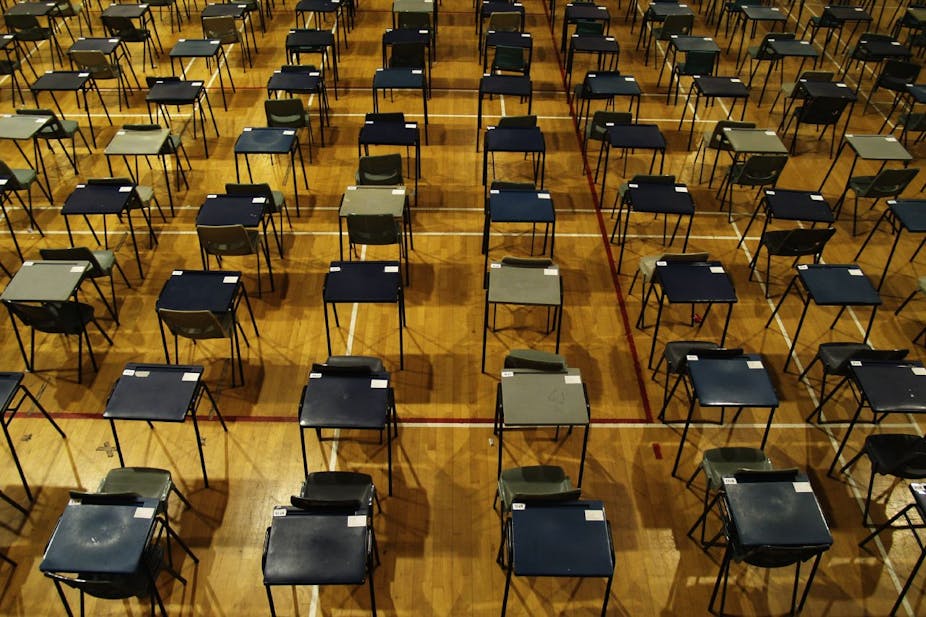When desks fill gym halls in Scottish schools for the start of exam time in a couple of weeks, there will be a big difference for the country’s 15 and 16 year olds.
It is out with the GCSE-equivalent Standard Grades and in with their replacements, the National 4s and 5s, for the first time. In case you hadn’t heard, many people in the teaching profession are unhappy about it.
Curricular change typically takes 10 years to take root in Scottish schools. It was true of the famed Primary Memorandum of 1965, the Standard Grade programme of the late 1970s, and the 5-14 development of the early 1990s.
So it should be no surprise that a decade on from the first Curriculum for Excellence document, we are only now entering the critical phase of implementation – at least as far as secondary schools are concerned. The many concerns that have been raised within the procession have to be viewed within this ten-year perspective.
There are various reasons why these courses and their associated assessments have been so problematic for teachers and schools. Many of these date back to the very start of the Curriculum for Excellence reforms in 2004, while others have developed since. It is important they are all addressed now so that the situation is not compounded with the revised Highers next year.
Laudable goals
The Curriculum for Excellence was a bold attempt to create, for the first time in Scottish educational history, a coherent and comprehensive curriculum for everyone from the age of three to 18.
The piecemeal reforms to secondary education that started in the 1970s wove an ill-fitting patchwork of provision. The 5-14 reforms, which transformed primary education and the early years of secondary, became for many schools an inhibiting, bureaucratic straitjacket.
The roots of the difficulties with the Nationals lie in their very first stage of development by the group tasked with identifying the principles and purposes of the curriculum. A curriculum is the rationale for an educational programme. It has four elements: aims, content, methods, and assessment – but that initial stage was almost entirely devoted only to the aims.

Recommended methods followed soon after and the suggested content emerged somewhat later. But plans for assessment took an unseasonable age to arrive, particularly those for the upper stages of secondary.
Teaching staff in secondary schools have not had the privilege of ten years to assimilate, consider and refine examination proposals. Generally speaking, the course specifications did not arrive until 2012 and then they were revised last summer, just prior to the start of the courses.
Only as the courses were being undertaken were teachers coming across issues around the amount of course content to be covered, challenges with sequencing activities and the timing of internal assessment.
In addition, there was a lack of sample exam papers to practise with. Anecdotally, I gather that quite a few schools are running classes through the Spring break so that pupils complete necessary activities.
Beyond the assessment issues
It’s not just this issue of time that has been problematic. There have been difficulties with putting together National 4 and 5 courses in many subject areas; linking them with the earlier stages of secondary; and, crucially for next year, with how the learning should then progress into Higher courses.
There have been issues with content overload and with the credibility of National 4, where planners have not made a persuasive case for why there is no external assessment.
One must not be sensationalist, though. It is to teachers’ credit that Scotland’s youngsters, especially those in fourth-year secondary today, have got on with their learning without much sign of angst or trepidation. Teachers have been able to keep these courses afloat and their learners on track despite the concerns and the shaking of heads in staffrooms.

What needs to be done now? The Scottish government has offered a delay for schools and councils who do not feel ready for the introduction of Highers next year and has offered an extra in-service day for associated planning and training.
Delaying would not be ideal, it must be said. The new National 4 and 5 courses are intended to dovetail with the revised Higher syllabus, not to be bolted on to the old one. Much better would be to aim to get this new system right. Teachers need time but also clear direction.
Council plans to cut exam study leave this year threaten to shut a vital window when development for the new Highers and revisions of the Nationals could take place.
Councils would do better to keep the time freed by study leave to work with staff to prepare for the coming year. In addition, a bold government decision to have more in-service days this June, not in the new session, would do much to defuse the situation.
On an optimistic note, realpolitik suggests that the 2014 National 4 and 5 results will be good. Parents and pupils should be reassured. Neither the government nor the Scottish Qualifications Authority can afford anything less – and they are unlikely to let it happen.

